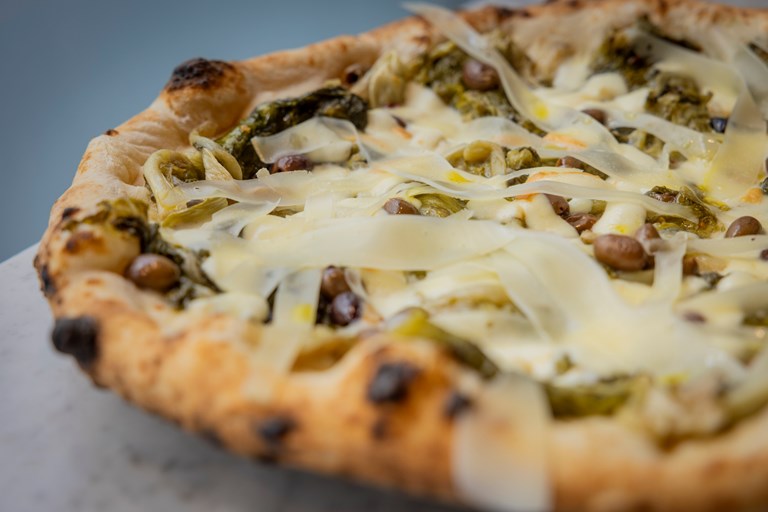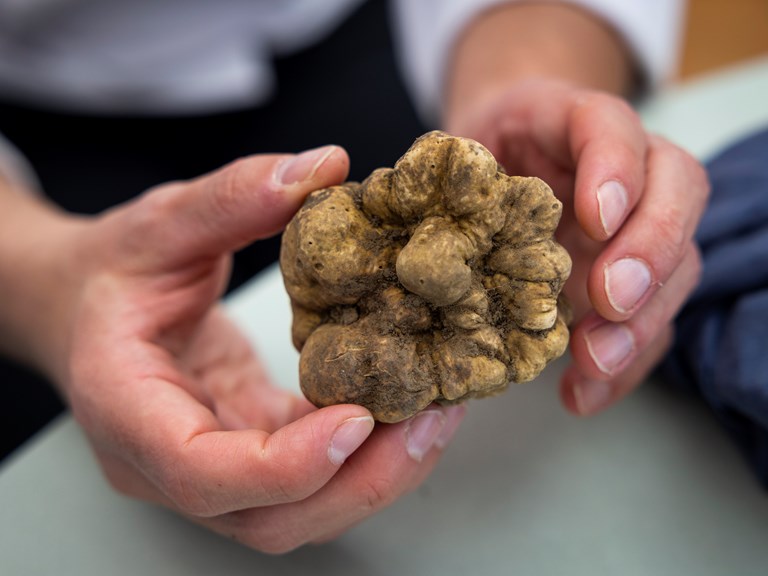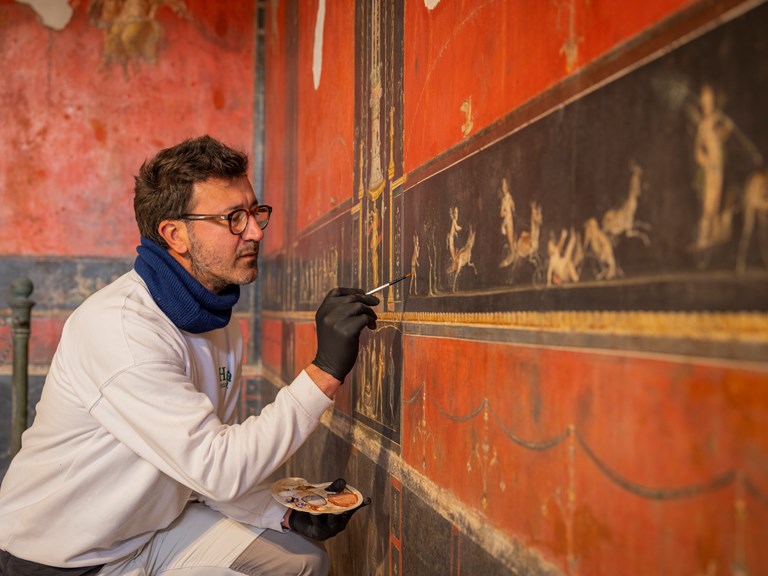NAPLES’ FESTIVE FOOD TRADITIONS
18.12.2022 NAPLES & AROUND
Gennaro’s childhood memories of the festive season begin with “all the aunts turning up, as if they’d all been summoned to a board meeting”. At some point “the wood-fired oven would be lit, and soon start turning out escarole pizza, lasagna, cannelloni, big roasts”.
“The kitchen would be a hive of activity where everyone had their assigned task”, Gennaro remembers. “The family would spend three days shopping for ingredients for just two meals – dinner on the 24th, and lunch on the 25th. But all that running around made everyone even more happy to relax and enjoy three or four convivial hours together when the meal was served”. The chef is convinced that his future path was laid out in these long family get-togethers. “Seeing so much passion dedicated to the preparation of food made me fall in love with the kitchen and its mysterious power”.
Although the old rule about not eating meat on the day before Christmas was officially abolished decades ago by the Catholic Church, Christmas Eve dinner is still strongly associated with fish dishes in much of Italy, not least in Naples. So much so that the city’s fishmongers stay open until close to midnight on the evening of the 23rd to meet the demand.
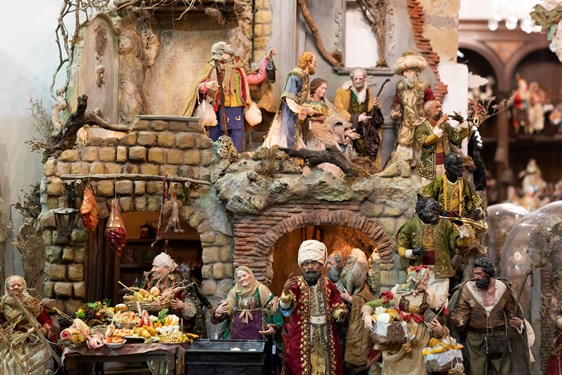
View
On the morning of the 24th, the city is alive with people doing their last-minute shopping, buying one more missing piece for the presepe or Christmas crib (an art form in Naples – the one pictured above was created by presepe maestro Marco Ferrigno), or meeting friends to exchange Christmas greetings over a brandy or a glass of Falanghina wine. By late afternoon, however, a hush descends on the city – apart, that is, from the occasional firecracker let off by kids too excited to wait for New Year’s Eve.
Earlier, the buzz was out on the streets; now it’s indoors, as families gather for the traditional cena della vigilia, or Christmas Eve feast. Nonna has probably been cooking since early morning, with other family members dropping in to help out, bring supplies or appoint themselves as official pasta tasters.
As for the menu, not too much has changed since one of the earliest cookbook writers, the great Ippolito Cavalcanti, laid down the law in his 1837 treatise Cucina teorico-pratica in 1837, giving the key dishes of the Neapolitan Christmas Eve meal as:
Vruoccoli zuffritti co l’alice salate
Vermicielli co la mollica de pane, o pure zuffritte co l’alice salate
Anquille fritte
Ragoste vollute co la sauza dè zuco de limone e uoglio
Cassuola de calamarielli e seccetelle
Pasticcio de pesce
Arrusto de capetone
Struffoli
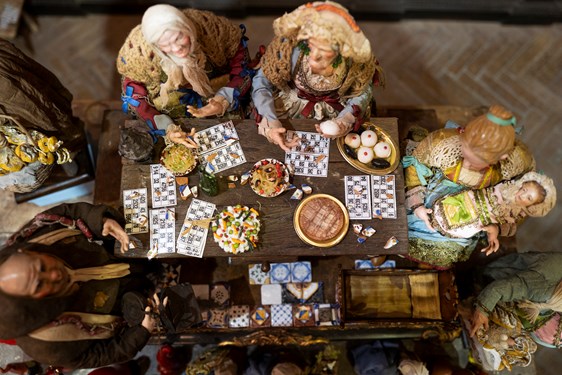
View
Cavalcanti’s Neapolitan dialect is so delicious that we’ve left his original words, but this is pretty much the running order: broccoli tossed in the pan with salted anchovies, fine spaghetti (vermicelli) with fried breadcrumbs and anchovies, fried eel (traditionally the female of the species, known as capitone in Naples), lobsters served with oil and lemon, casserole of baby squid and cuttlefish, fish pie, roast capitone, all polished off by the fried, sugar dusted dough balls known as struffoli (see here for a recipe). A dinner guaranteed to leave you feeling light as a feather and hungry for more…
In today’s Naples, the lobster will probably be skipped (not everyone has Cavalcanti’s budget – he was a duke who happened also to be a direct descendant of Dante). The vermicelli or spaghetti are more likely to be served with vongole (clams) than with anchovies. And while the bitter vegetable element to kick things off could indeed still be what Neapolitans call broccoli di natale (these are a local winter variety of tenderstem broccoli, eaten leaves, stems and all), it is just as likely these days to be scarola, or escarole.
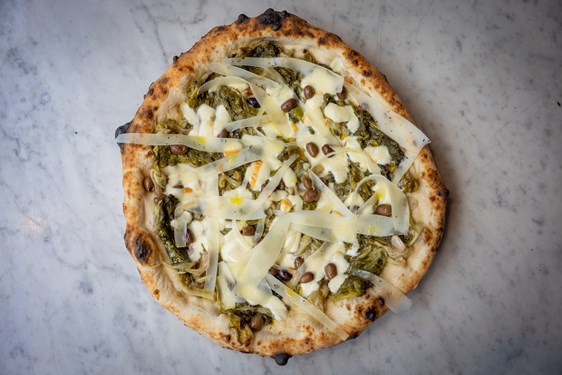
View
Escarole pie or pizza has become a Christmas Eve classic in Naples. It can be a pie with a filling between two layers of pastry, or it can be an open pizza. Part of the chicory family, scarola is a ‘bitter green’ that looks a lot like a lettuce. Except, unlike lettuces, it’s cooked rather than eaten raw. Its loyal flavor companions are salted anchovies, olives, pine nuts and sultanas. Briefly, the escarole leaves are wilted by being thrown into boiling water for a few minutes, then tossed in a pan with the other ingredients (the sultanas having been previously plumped up for a while in hot water) until the anchovies dissolve. The version of escarole pie that features in our lead photo is an open pizza created by the volcanic Ciro Oliva of Concettina ai Tre Santi in Naples’ La Sanità quartiere.
After that Christmas Eve blowout, Christmas Day in Naples is a more modest affair on the food front, not so much a feast as a celebration of la cucina povera. If this austerity strikes you as strange, it helps to remember that midnight mass on Christmas Eve is the culminating moment of the Catholic Christmas calendar: so while undoubtedly festive, 25 December is, in Italy, something of a ‘day after’, the equivalent of 26 December in countries with Protestant or Lutheran traditons.
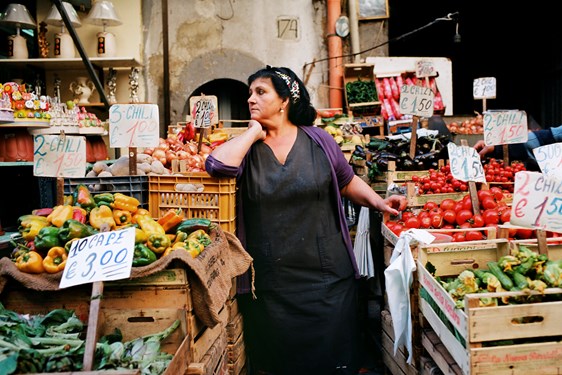
View
Lunch on the 25th is likely to centre on la minestra maritata, a dish often mistranslated in English as ‘Wedding Soup’. What maritata (‘married’) refers to here is not a wedding between people, but a wedding between ingredients – specifically meat, and vegetables. It has nothing to do with weddings, and a lot to do with the fact that poor Neapolitan families would make an effort, on this special day, to add a little meat to their vegetable broth. They would do so by cajoling the butcher to give them some leftovers. The best menesta maretata – to use the Neapolitan dialect term – is made of offcuts too unmentionable to be named in a respectable publication like the Sirenuse Journal. But it is delicious, and salutary.
Grandparents – as clever in Naples as anywhere on the planet – would persuade their reluctant grandchildren to eat it up by telling them that the minestra maritata is not a dish for babies. When you’re ready to eat it, it means you’re all grown up.
Buone feste a tutti!
Photos © Roberto Salomone
Le Sirenuse Newsletter
Stay up to date
Sign up to our newsletter for regular updates on Amalfi Coast stories, events, recipes and glorious sunsets
